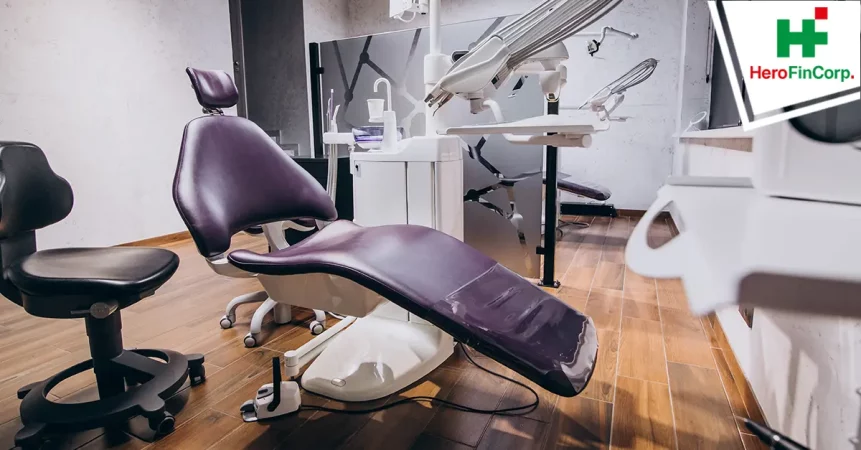Investing in better care through the acquisition of medical equipment is crucial for healthcare facilities and practitioners aiming to provide high-quality services. However, the cost of purchasing or upgrading medical equipment can be substantial, posing a challenge for many healthcare providers. In such cases, exploring financing services for medical equipment becomes essential to ensure the availability of state-of-the-art devices and technologies.
This article aims to explore various financing options available to healthcare providers and practitioners for acquiring medical equipment. By understanding these options, healthcare professionals can make informed decisions regarding their investment in medical equipment and ultimately enhance the quality of patient care.
Understanding the Importance of Medical Equipment
Medical equipment plays a vital role in the diagnosis, treatment, and monitoring of patients. It encompasses a wide range of devices, from simple tools like stethoscopes to complex imaging systems and surgical instruments. The availability of advanced medical equipment enables healthcare professionals to deliver accurate diagnoses, perform precise procedures, and monitor patient progress effectively.
As medical technology continues to advance, healthcare providers need to stay up-to-date with the latest equipment to ensure optimal patient care. Investing in modern medical equipment enhances efficiency, reduces errors, and improves patient outcomes. However, the cost associated with acquiring or upgrading medical equipment can be a significant barrier for many healthcare providers.
Financing Options for Medical Equipment
Traditional Financing Methods
Traditional financing methods include bank loans and lines of credit. These options require healthcare providers to apply for financing directly from financial institutions. If approved, the provider receives the necessary funds to purchase the required medical equipment. The loan is then repaid over time, typically with interest.
Traditional financing methods offer the advantage of ownership, allowing healthcare providers to fully own the equipment once the loan is paid off. However, they may require substantial down payments and collateral, and interest rates can vary based on the provider’s creditworthiness.
Leasing Medical Equipment
Leasing medical equipment is an alternative to traditional financing. With leasing, healthcare providers can acquire equipment without making a large upfront payment. Instead, they make regular lease payments over a fixed period. At the end of the lease term, the provider can choose to return the equipment, upgrade to newer models, or purchase the equipment at a predetermined price.
Leasing offers flexibility and cost control, as providers can access the latest equipment without significant upfront costs. Additionally, leasing allows providers to easily upgrade equipment as technology advances, ensuring they always have access to state-of-the-art devices.
Equipment Financing Companies
Equipment financing companies specialize in providing loans and leases specifically for medical equipment. These companies understand the unique needs of healthcare providers and offer tailored financing options. They often have partnerships with equipment manufacturers and distributors, allowing providers to access a wide range of medical devices.
Working with equipment financing companies can streamline the financing process, as they have expertise in the healthcare industry and understand the value and specific requirements of medical equipment. They can provide competitive interest rates, flexible terms, and expedited approval processes.
Government Assistance Programs
Government assistance programs can be an excellent resource for healthcare providers seeking financial support for medical equipment. These programs vary by region and may include grants, loans, or subsidies specifically designed to assist healthcare organizations in acquiring essential equipment.
Providers can explore government programs at the local, state, or federal level to determine if they qualify for financial assistance. These programs often have specific eligibility criteria, so it’s important to thoroughly research and understand the requirements before applying.
Factors to Consider When Financing Medical Equipment
When considering financing options for medical equipment, healthcare providers should evaluate several factors to ensure they make the best decision for their practice. These factors include equipment lifespan and usage, total cost of ownership, interest rates and terms, and flexibility and upgrades.
Equipment Lifespan and Usage
Understanding the expected lifespan of the equipment and its intended usage is crucial in determining the most suitable financing option. Some medical equipment may have a shorter lifespan or require frequent upgrades due to technological advancements. In such cases, leasing or equipment financing with built-in upgrade options may be more beneficial.
Total Cost of Ownership
The total cost of ownership includes not only the purchase price of the equipment but also ongoing maintenance, repairs, and operating expenses. Providers should consider these additional costs when comparing financing options. Leasing, for example, may include maintenance and support services as part of the agreement, reducing the overall cost of ownership.
Interest Rates and Terms
Interest rates and financing terms can significantly impact the overall cost of acquiring medical equipment. Providers should compare rates from different lenders or leasing companies to ensure they secure the most favorable terms. Additionally, understanding the repayment schedule, including the frequency and duration of payments, is essential to budgeting effectively.
Flexibility and Upgrades
Healthcare facilities often require flexibility when it comes to equipment upgrades or changes in requirements. Providers should consider whether the financing option allows for easy equipment upgrades or early termination of leases without excessive penalties. This flexibility ensures that providers can adapt to evolving technological advancements or changes in patient needs.
Investing in better care through the acquisition of medicals equipment is crucial for healthcare providers aiming to deliver high-quality services. Exploring financing options for medical equipment allows providers to overcome financial barriers and access state-of-the-art devices. By considering factors like equipment lifespan, total cost of ownership, and flexibility, healthcare professionals can make informed decisions and enhance patient care.
Remember, financing options vary, and it’s essential to thoroughly research and compare different options to find the most suitable solution for your practice’s needs. Investing in the right medicals equipment can significantly impact patient outcomes and the overall efficiency of healthcare delivery.




